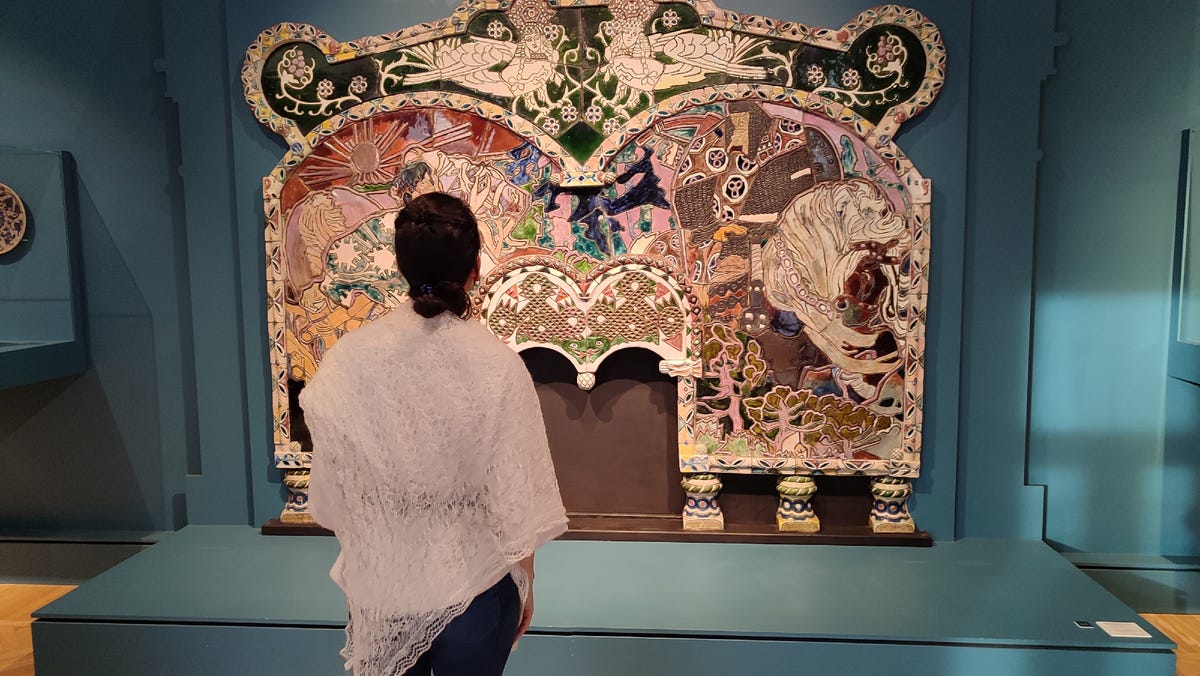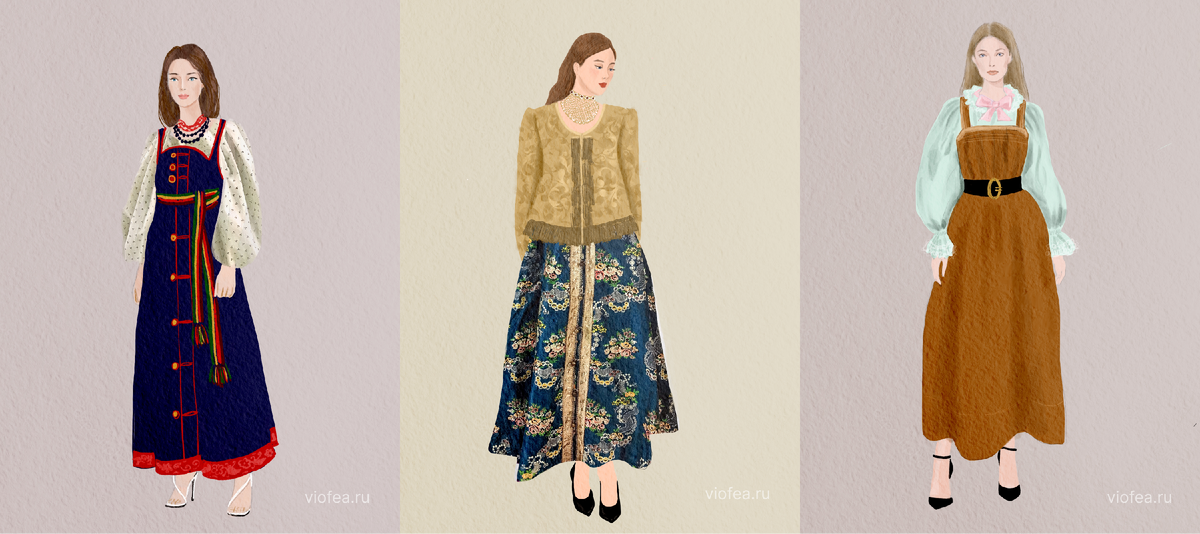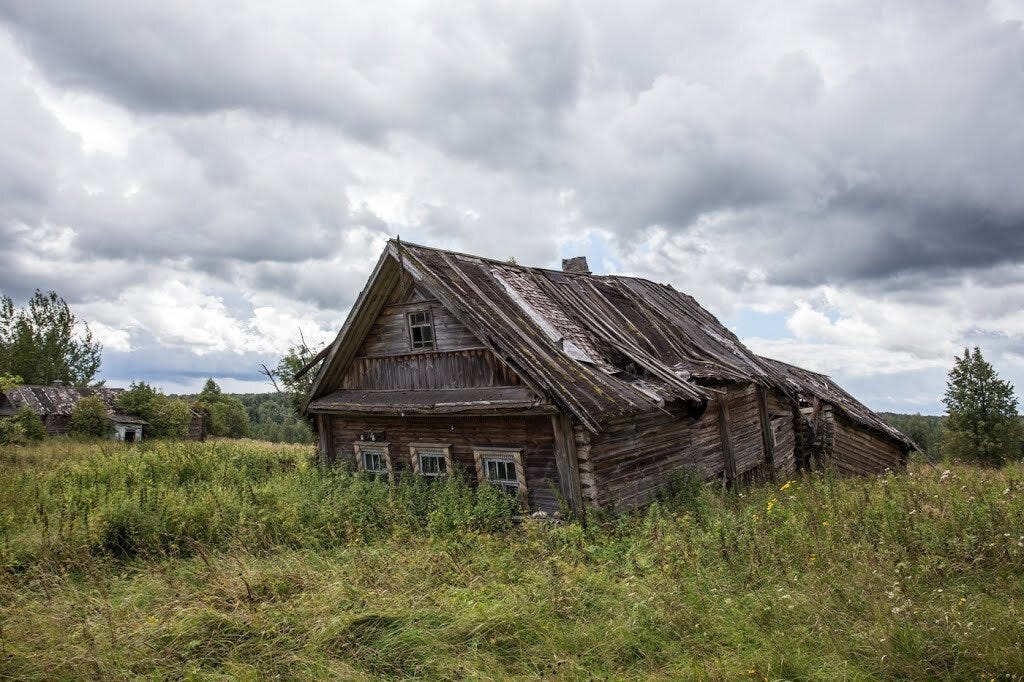Folk art in the 21st century
Before the New Year I managed to visit the Museum of Decorative Arts on Delegatskaya street in Moscow. It is now in second place on my list of the best museums. On the top, after all, is the Museum of Russian Icons of Mikhail Abramov on Goncharnaya Street in Moscow.
Since I have practically no photographs from the museum, I advise you to watch a short video before reading.
Completely delighted with the exhibition, entering the cozy museum cafe, I began to think: what awaits folk art in the 21st century? I want to be wrong, but I think it’s oblivion.
On the one hand, it is incredibly beautiful, but on the other hand, we absolutely do not need it in everyday life. We no longer store things in chests, and our window curtains are not embroidered. We dress simply and practically in synthetics from the mass market, but we don’t wear bright sashes, panevas (I am not sure about english tranlation of russian панёва) and kaftans made of colorful brocade. What we call today the revival of traditions is more like creating national branding and designing “packaging” for everything we want to sell, wrapped in Russian style.
Folk clothing
There is a difference between folk costume and national costume. Especially when we are talking about such a diverse country as Russia.
Folk costumes differed depending on the region. In the southern Russian provinces, for example, clothing made from homespun fabrics (hemp, wool) predominated. Clothes made of soft reindeer suede and fur were worn in the north. Beaded jewelry was typical for the southern Great Russians, Volga Finns, and Chuvash. The famous sundress was also not worn everywhere, but mainly in the north, central and southern provinces of the European part of Russia. Among the peoples of the Caucasus, black was the dominant color in their clothes, while among the peoples, for example, of the Volga region, red, yellow, gold, and white were the dominant colors. Beauty and diversity!
The national costume appeared during the reign of Catherine. She was the first to wear a dress with double sleeves, which was called Russian. And if at the beginning of the 18th century Peter I forbade wearing folk clothes in every possible way, then at the end of the same century Catherine II, having collected the best from Russian folk costumes, created a national one and showed off in it at social events. Prince Peter Vyazemsky accurately noted the difference in attitude towards the people of Peter I and Catherine II: “How strange is our fate! The Russian tried to make Germans out of us; The German woman wanted to turn us into Russians.”
Author: viofea.ru. Illustrations from the book “Festive clothing of the peoples of Russia. From the collection of the Historical Museum."
At the beginning of the 20th century, there was another round of fashion for everything Russian. And then A. Benois, S. Diaghilev, L. Bakst, E. Lanceray, A. Shchusev and many other artists actively showed themselves, who applied their talents to the creation of a national Russian style. The same one that all of Europe admired, America envied and China poorly counterfeited. I (lovingly) call this Russian style façade. This is when professional artists, fashion designers, jewelers, sculptors, architects begin to create based on folk art, and as a result we get beautiful items in the Russian style, which also sell well.
But fashion is fashion, sales are sales, and in everyday life, we still do not use any objects of folk arts and crafts. We haven’t bought Dymkovo toys for children for probably a hundred years now. Therefore, it seems that folk art in the 21st century is unlikely to go beyond museums. The only thing that has a chance of ending up in our house is the Orenburg and Pavloposad scarf. As long as the frost crackles and the wind blows in Russia, the scarf has a future.
People's House
It’s interesting that in the All-Russian Museum of Decorative Arts, looking at the tiles and carved shutters that decorated Russian houses, I suddenly remembered one publication on Instagram - a photograph of a rickety hut in a God-forsaken village and the caption: “Russian village. The one that we love very much, but for some reason we don’t want to live in.” I don’t remember who noticed this so clearly, but it’s surprising that after almost 10 years of using this social network, having seen a million different publications, this is the only one I remember. The photo looked like this...
Photo from the blog “Forgotten Corner of Russia”, article RUSSIAN IZBA UNDER THE THREAT OF DISAPPEARANCE
But it is naive to think that this only happens to people in Russia. Recently, I read an interview with Korean photographer Kim Woo-young in Art magazine. And here is his quote: “Many Koreans say they are interested in old houses, but in reality we are talking about glamorized, hipster hanoks (Korean house) that have been turned into coffee shops or teahouses - and I am very embarrassed that you, visitors, see them and you think that these are originals. They are so altered, so transformed to suit modern design, that there is nothing truthful left in them.”
It’s unpleasant when something popular turns into a prop for a tourist national façade. When the folk are applied by the people themselves, multiplied and developed, then it is alive and necessary. And when people have enough household utensils from Ikea and Leroy, clothes from AliExpress and Turkish TV series, the only ones who can preserve folk items are museums and collectors.






